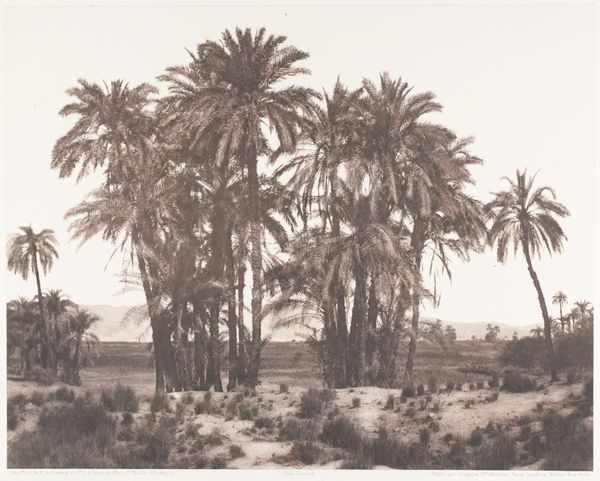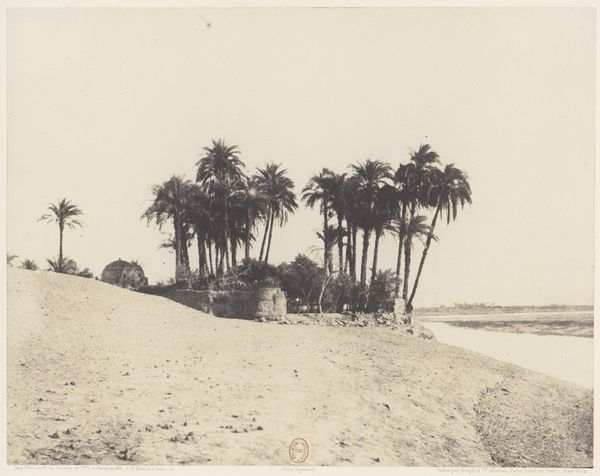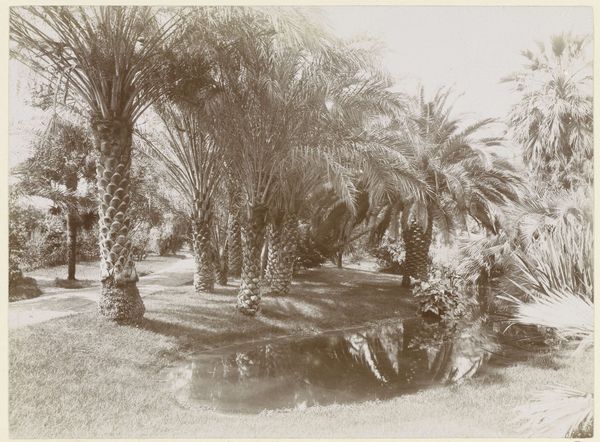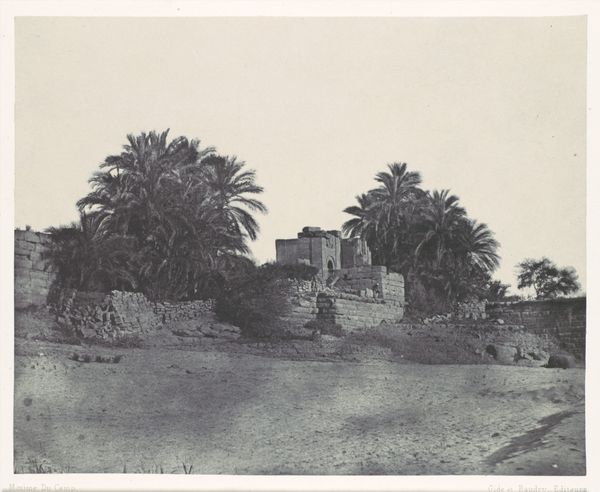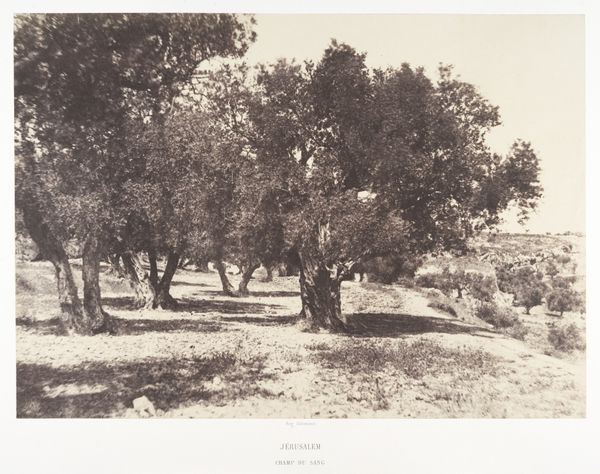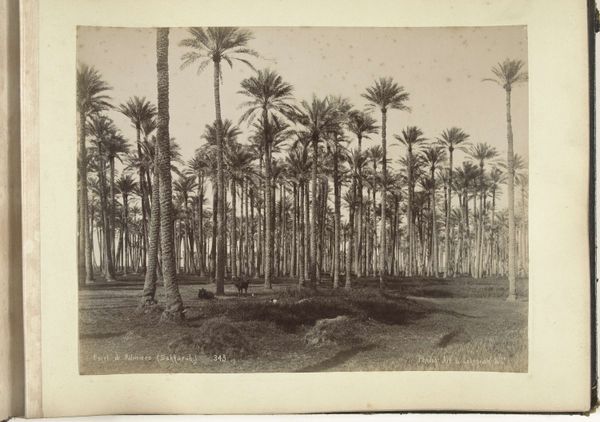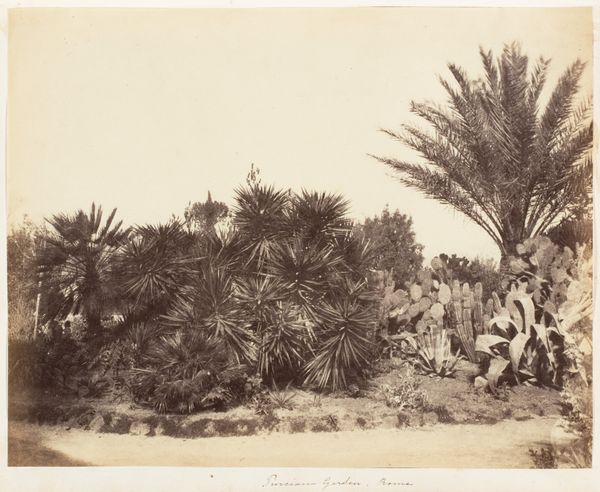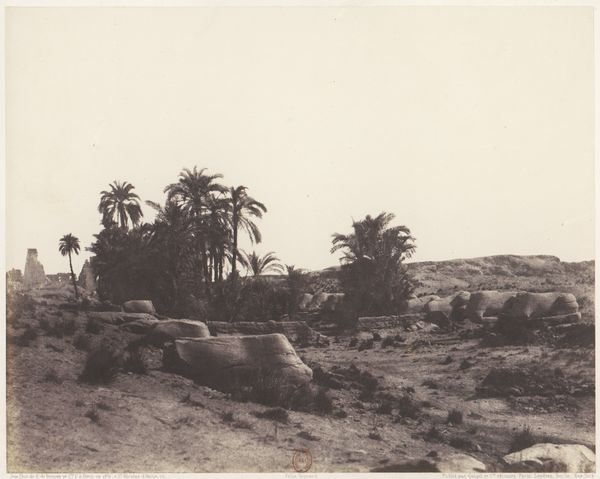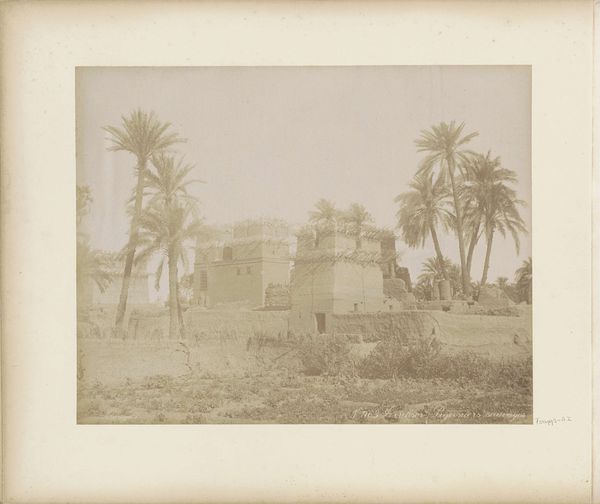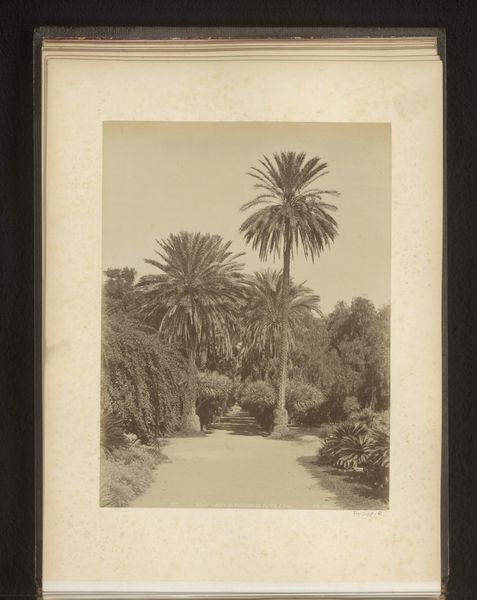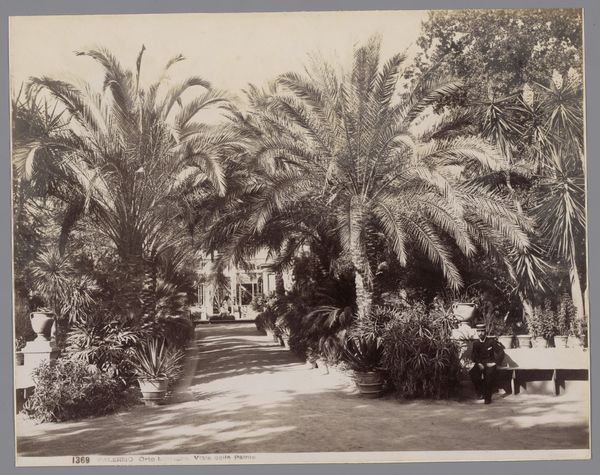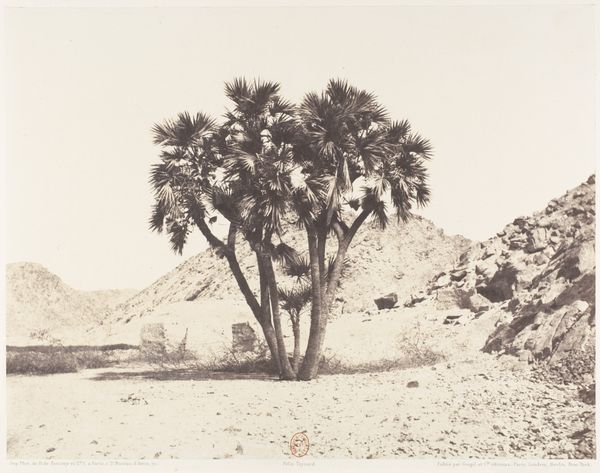
Esneh, Dattiers, Sycomore et Café Sur le Bord du Nil 1851 - 1852
0:00
0:00
daguerreotype, photography
#
landscape
#
daguerreotype
#
ancient-egyptian-art
#
photography
#
orientalism
Dimensions: 23.8 x 30.5 cm. (9 3/8 x 12 in.)
Copyright: Public Domain
Editor: So, this is Félix Teynard's "Esneh, Dattiers, Sycomore et Café Sur le Bord du Nil" from around 1851-1852. It’s a daguerreotype, which is an early photographic process, right? It has this wonderfully serene feel. The large tree seems almost protective. What do you see in this piece, considering it's not just a landscape? Curator: Beyond its aesthetic qualities, consider the symbolism embedded within. The date palm, the "dattiers", has ancient associations with life and fertility in many cultures, from the Near East to North Africa. The Sycamore tree, too, carries powerful resonance, often linked to ideas of strength and longevity, not unlike a Bodhi tree. What do these choices, carefully composed, suggest to you about Teynard's intentions? Editor: Hmmm... Intentions. Well, I initially just saw a nice, peaceful scene, but with your comments about date palms being linked to fertility and the Sycamore linked to strength and longevity, I guess he’s saying something more. Do you think he was romanticizing Egyptian culture for a European audience? Curator: The gaze of early photography in this region cannot be divorced from its socio-political context. How much of Teynard's work is a recording, and how much a construction for a Western audience keen to consume exoticized imagery? The “cafe” included in the title, the specific staging…it speaks to Orientalist trends and cultural appropriation in the arts. The ruins of the village become a stage, the residents mere players. Editor: I didn’t consider that. The framing is really interesting now, with all that history in mind. It changes the whole dynamic of the image. I see a kind of visual record filtered through European eyes. Curator: Exactly. And, that intersection - the visible, historical symbols viewed through a colonizing lens – makes it incredibly compelling for a study of both art and cultural memory. Editor: Well, this has certainly given me a lot to think about! I came for art, and discovered an amazing study of power.
Comments
No comments
Be the first to comment and join the conversation on the ultimate creative platform.
